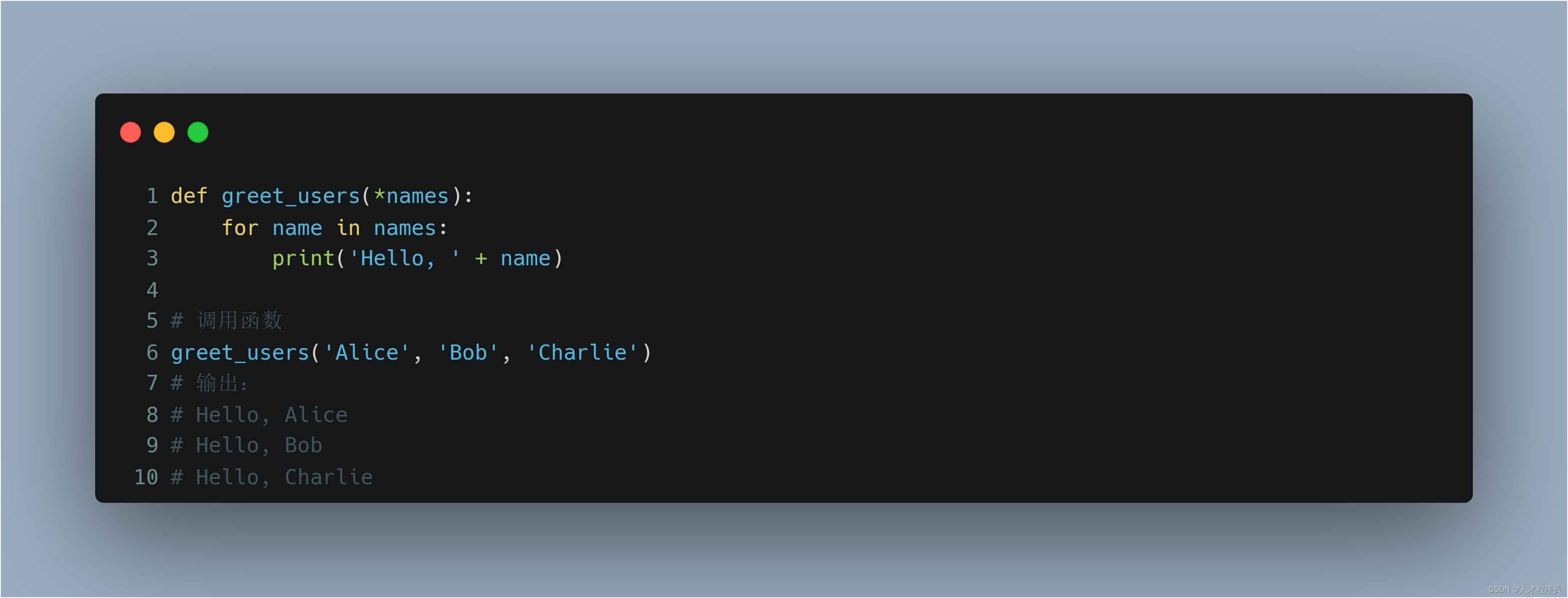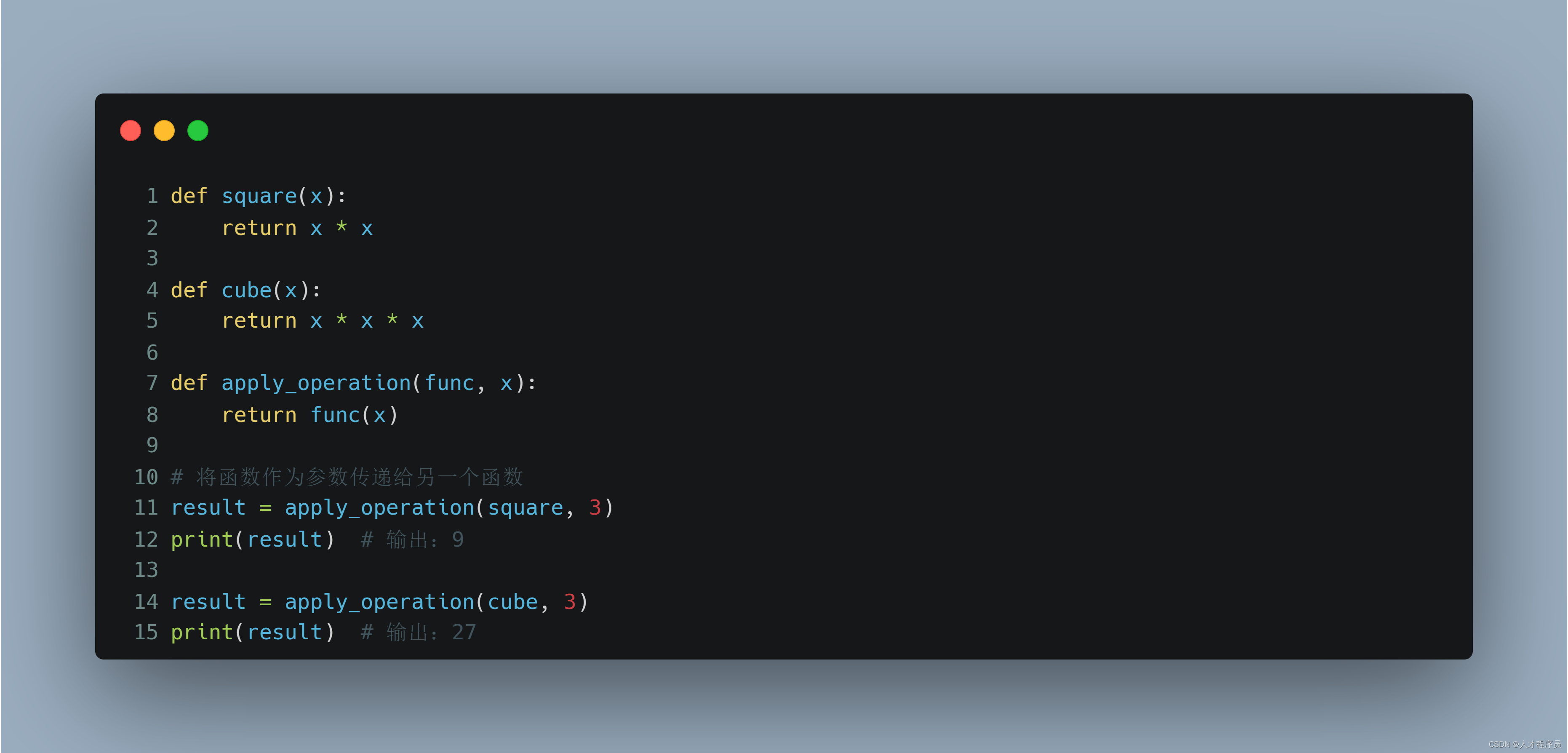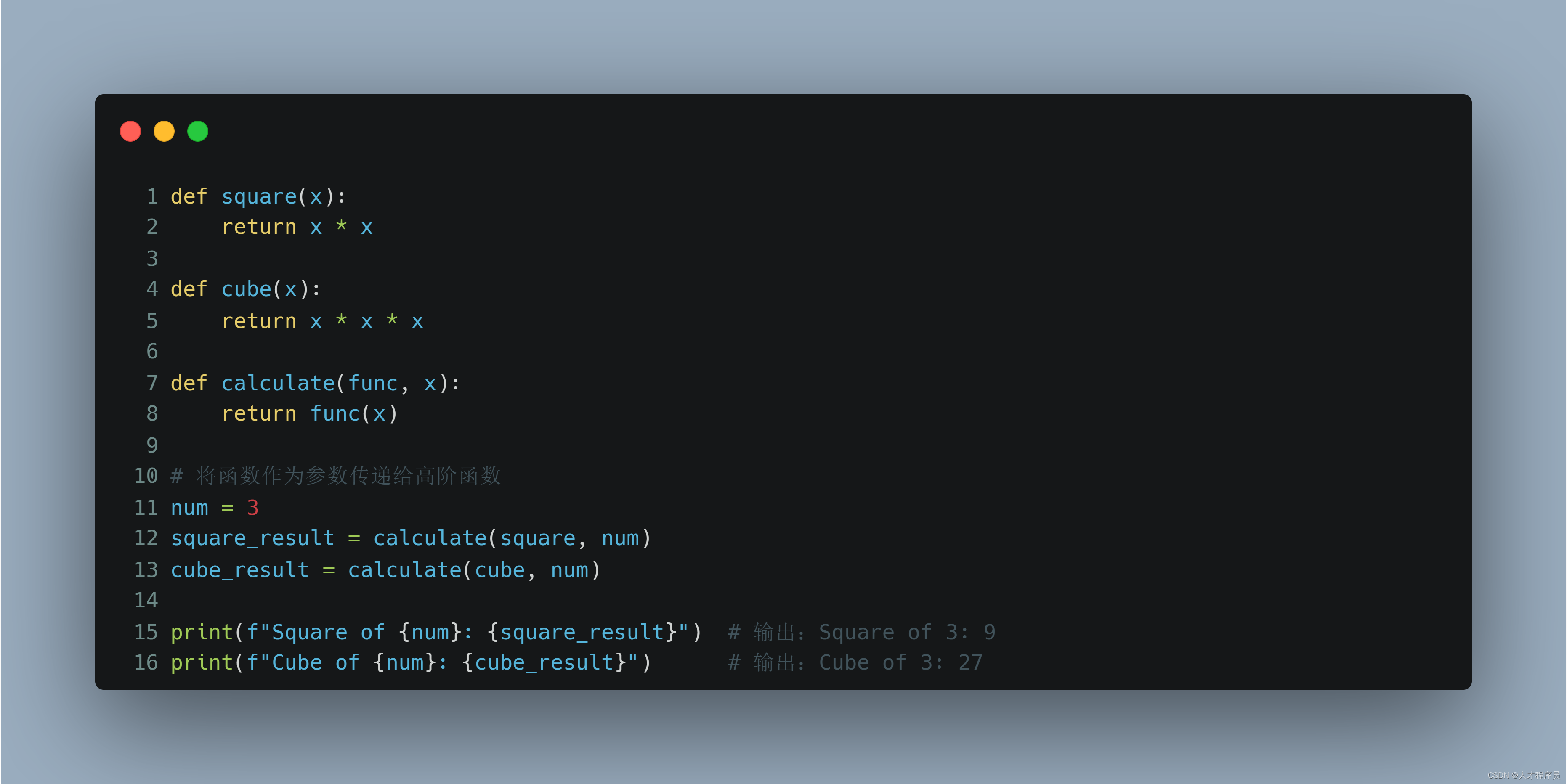-
【Python基础】字典和函数拓展
前言
Python作为一种高级编程语言,提供了许多数据结构和函数特性,其中字典(Dictionary)和函数(Function)是非常重要的基础概念。本文将介绍字典的基本概念、操作和函数的拓展用法,包括多返回值、多参数和函数作为参数传递的应用。
一、字典
1.1 字典是什么?
字典是Python中的一种数据结构,它以键-值(Key-Value)对的形式存储数据。字典是无序的,可变的,并且可以嵌套,允许存储任意类型的对象。
1.2 字典的定义和操作
字典使用花括号 {} 定义,键值对之间使用冒号 : 分隔,不同的键值对使用逗号 , 分隔。字典的键必须是不可变的类型,比如整数、字符串或元组。
字典的定义
my_dict = { 'name': 'Alice', 'age': 30, 'city': 'New York' }- 1
- 2
- 3
- 4
- 5

访问字典元素
print(my_dict['name']) # 输出:Alice- 1

修改字典元素
my_dict['age'] = 31- 1

添加新键值对
my_dict['gender'] = 'Female'- 1

直接使用[]里面填你要的键即可
删除键值对
del my_dict['city']- 1

二、函数的拓展
Python的函数不仅可以返回单个值,还可以返回多个值。同时,函数可以接受多个参数,并且可以将函数作为参数传递给其他函数。
2.1 多返回值的函数
def get_user_info(): name = 'Alice' age = 30 return name, age- 1
- 2
- 3
- 4

2.2 调用函数并接收多个返回值
user_name, user_age = get_user_info() print(user_name) # 输出:Alice print(user_age) # 输出:30- 1
- 2
- 3

2.3 多参数的函数
def greet_users(*args): for arg in args: print('Hello, ' + arg ) # 调用函数 greet_users('Alice', 'Bob', 'Charlie') # 输出: # Hello, Alice # Hello, Bob # Hello, Charlie- 1
- 2
- 3
- 4
- 5
- 6
- 7
- 8
- 9
- 10

2.4 函数作为参数传递
def square(x): return x * x def cube(x): return x * x * x def apply_operation(func, x): return func(x) # 将函数作为参数传递给另一个函数 result = apply_operation(square, 3) print(result) # 输出:9 result = apply_operation(cube, 3) print(result) # 输出:27- 1
- 2
- 3
- 4
- 5
- 6
- 7
- 8
- 9
- 10
- 11
- 12
- 13
- 14
- 15

2.5 示例代码
下面是一个将函数作为参数传递的示例代码,该代码定义了两个函数,一个用于求平方,另一个用于求立方。然后,定义了一个高阶函数 calculate,该函数接受一个操作函数和一个数字作为参数,并返回该操作函数对该数字的计算结果。
def square(x): return x * x def cube(x): return x * x * x def calculate(func, x): return func(x) # 将函数作为参数传递给高阶函数 num = 3 square_result = calculate(square, num) cube_result = calculate(cube, num) print(f"Square of {num}: {square_result}") # 输出:Square of 3: 9 print(f"Cube of {num}: {cube_result}") # 输出:Cube of 3: 27- 1
- 2
- 3
- 4
- 5
- 6
- 7
- 8
- 9
- 10
- 11
- 12
- 13
- 14
- 15
- 16

总结
本文介绍了字典的基本概念、定义和操作,以及函数的拓展用法,包括多返回值、多参数和函数作为参数传递。字典是一种灵活、强大的数据结构,函数的拓展用法则增加了程序的灵活性和可重用性。掌握这些基础概念和技巧,将帮助你更好地使用Python进行编程。
-
相关阅读:
系统测试-从研发到测试过程
山西电力市场日前价格预测【2023-09-13】
Spring MVC 中的分页 RESTful API 响应
浅谈中压系统母线弧光保护的必要性
Harbor私有仓库
K-Core, K-Shell & K-Crust傻傻分不清楚
Jackson 2.x 系列【29】Spring Boot 集成之 Redis 序列化/反序列化
窗口延时、侧输出流数据处理
Vue3+Typescript学习笔记(九)组件通信--父子组件通信(props,$emit)
小目标检测高效解决方案汇总,附19篇原论文&开源代码
- 原文地址:https://blog.csdn.net/m0_62599305/article/details/133612275
